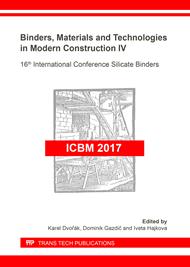p.217
p.223
p.229
p.236
p.242
p.248
p.254
p.259
p.265
Use of Undersize Fractions of Refractory Claystone for Grog Manufacturing in Shaft Kilns
Abstract:
Refractory aluminosilicate grogs are made by firing refractory clays and claystones. They are fired predominantly in rotary or shaft kilns. Prior to firing in shaft kilns, particles of claystone smaller than 35 mm are separated These fine fractions cannot be processed in a shaft kiln, since they lower the quality and homogeneity of firing. However, these claystones can be briquetted into larger pieces (5 – 6 cm), which can be easily fired in shaft kilns. It is possible to modify the raw material by adding correcting materials or other types of clay. This method can then be used for making special grogs. The paper discusses the possibilities of manufacturing grog with an increased Al2O3 content with undersize fractions of claystone mined in Březinka. The research focused on the influence of raw material water content and compacting pressure on the final properties of fireclay grog, and determining the influence of firing temperature on the properties of the grog.
Info:
Periodical:
Pages:
242-247
Citation:
Online since:
June 2018
Authors:
Keywords:
Price:
Сopyright:
© 2018 Trans Tech Publications Ltd. All Rights Reserved
Share:
Citation:


